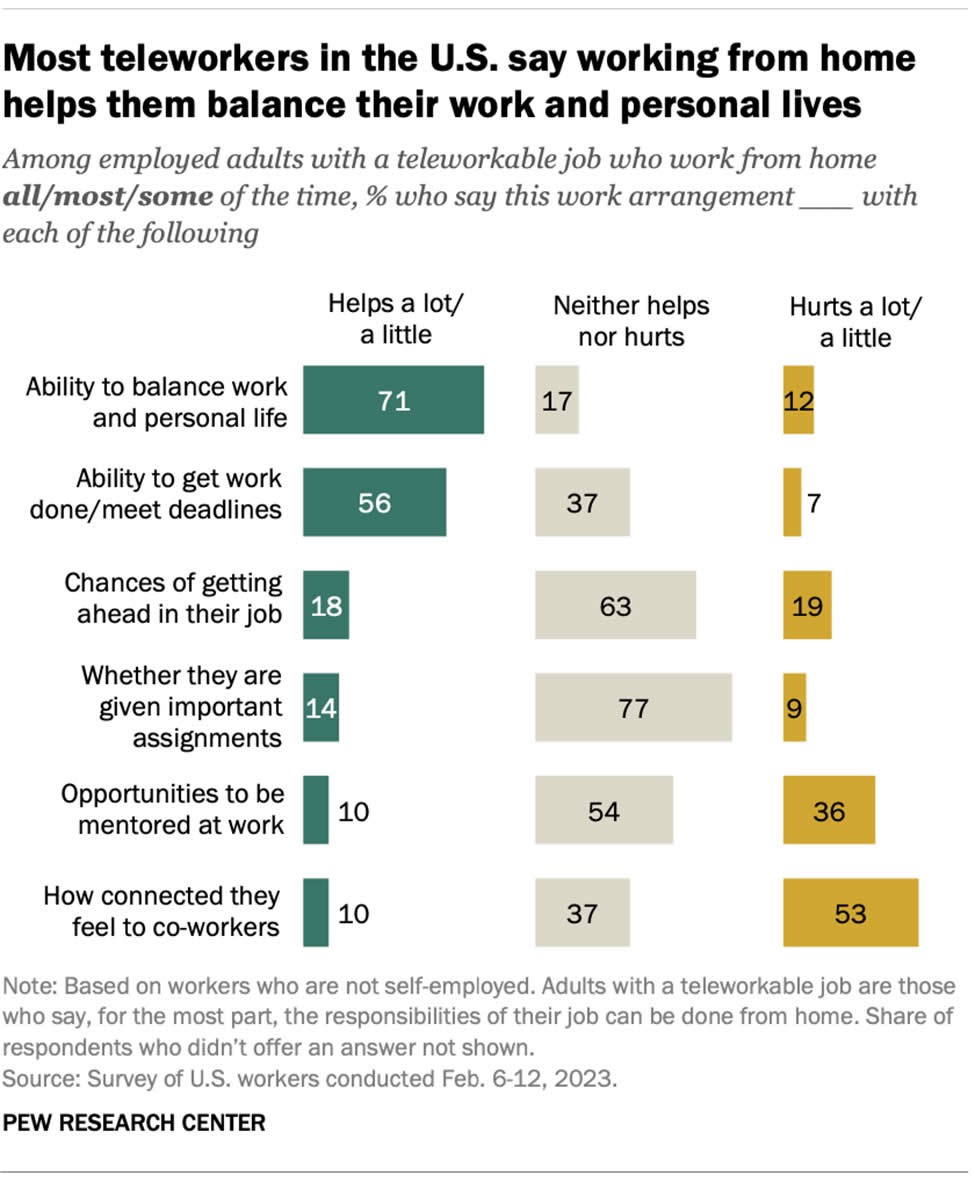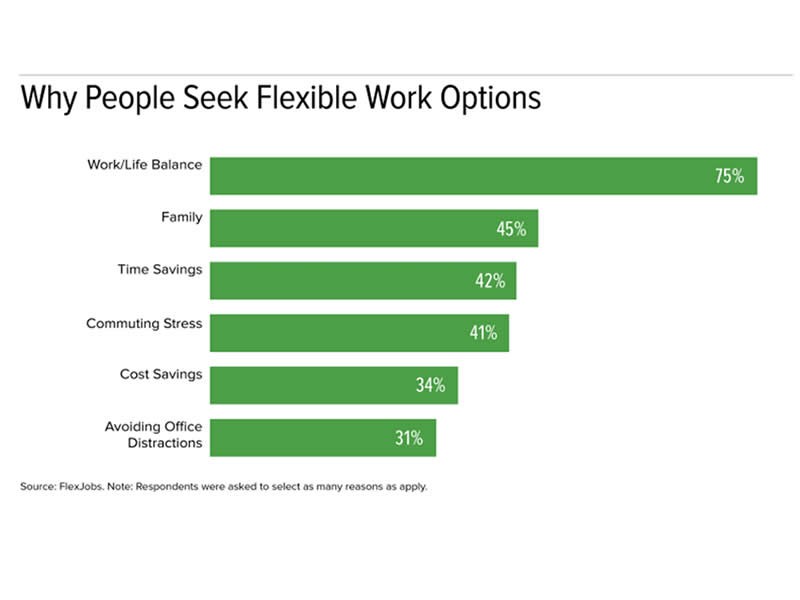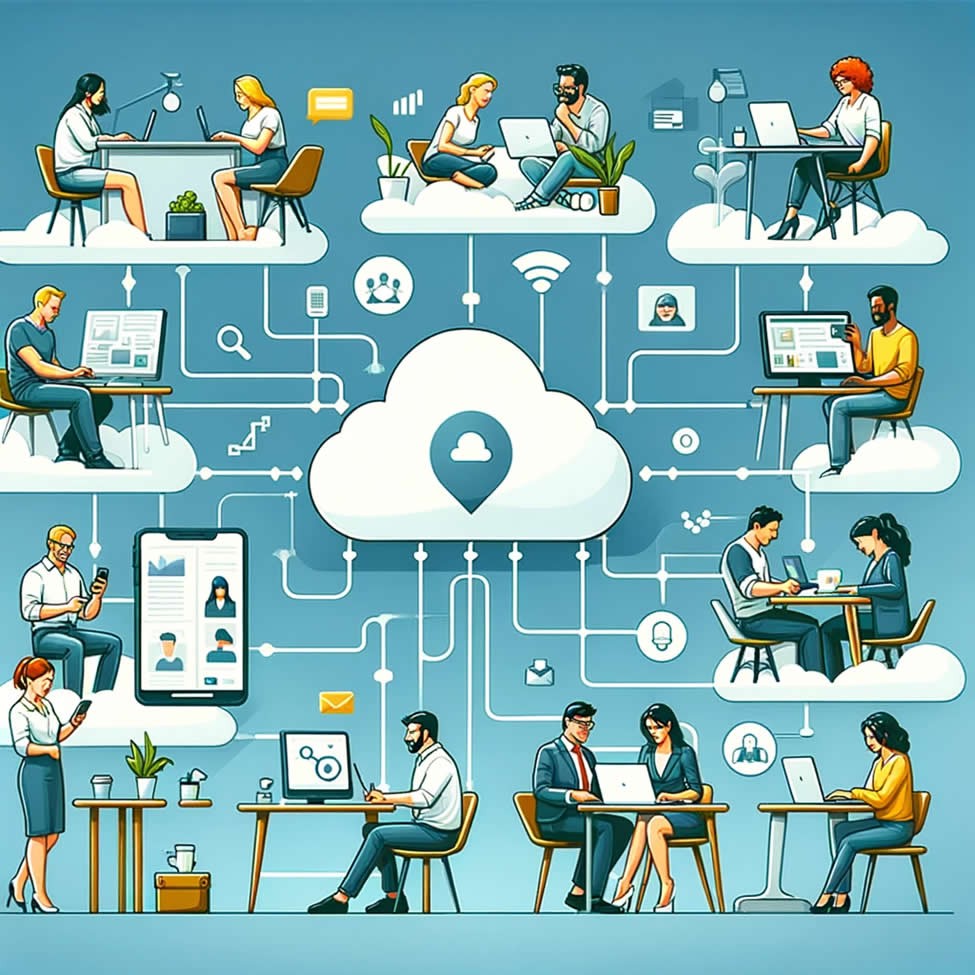Insight Blog
Agility’s perspectives on transforming the employee's experience throughout remote transformation using connected enterprise tools.
8 minutes reading time
(1643 words)
The benefits of using cloud-based collaboration tools for remote work and hybrid teams
With working from home being the new normal, a valid senior leadership concern is finding a balance between giving employees the flexibility of working from home without sacrificing quality of output.
Remote collaboration is becoming the new normal. But how do you provide your team with a secure platform that enables effective collaboration?
Enter cloud-based systems, which are fast becoming the popular choice of modern-day organizations.
And it's not hard to understand why. Cloud-based collaboration tools are an excellent choice because they offer a wide range of features that enable remote teams to work as productively as ever.
In this blog, we'll explore 10 core features of cloud models.
Accessible on-the-go
With the rise of remote workers and hybrid teams, your organization needs to ensure team members can access crucial documents and meeting notes, communicate with one another, and have full transparency over any projects involved.
Thanks to the cloud, anyone can be "in the office" as long as they have an internet connection.
In a post-COVID world, employees want flexible working options. They want to work in environments they feel bring out the best out of them–whether at home, at a coffee shop, or in the traditional office setting.
Using the cloud lets people work flexibly around other responsibilities. For example, a parent who used to leave work early for school pick-ups can now work from home and not only enjoy shorter school runs but continue working when they get home. This way, they can handle both work and family needs without neglecting either.
Real-time collaboration
Google Workspaces, for example, allows multiple users to work together on the same project or document simultaneously. This capability boosts efficiency and maintains seamless version control.
Changes made by one member are instantly visible to others. This facilitates an interactive work process that speeds up project completion and improves the quality of work, as team members can instantly share ideas, provide feedback, and make decisions together.
In marketing, for example, cloud collaboration tools like Simplified enable team members scattered worldwide to collaborate on diverse tasks effortlessly, such as content creation, video editing, and graphic design. Furthermore, Simplified offers specialized tools such as an AI content generator, social media management, and video editing to help churn out content quickly.
Scalability
When your organization grows, you need your infrastructure to accommodate the extra workload and capacity demands.
Cloud tools are innately designed to adapt to your organization's changing needs–whether you're hiring new people or taking on more projects.
With traditional systems, you need to pay a heavy cost up-front to increase capacity while waiting longer to get up to speed. In cloud services, the matter is as simple as changing to a different plan at the click of your mouse!
Follow us and access great exclusive content everyday: Follow us on Google News
Cost-effectiveness
Investing in physical infrastructure is more expensive. You don't only need to buy the hardware but pay for it to be installed on-site and fork up regular maintenance costs.
Cloud systems don't occupy physical space, and subscriptions are cheaper without any hidden costs. You make singular monthly payments and nothing more (unless you change your subscription).
Furthermore, the pay-as-you-go model means businesses only pay for what they use, allowing for better cost control.
Enhanced security
Here's an example of how security would work in cloud-based tools:
Imagine a law firm that handles sensitive client information, such as legal documents, contracts, and personal data. To protect this information, the firm uploads everything to a cloud-based document management system.
The cloud system automatically encrypts any documents divorce mediators upload related to their client's case.
This means the document is turned into a complex code that can only be decoded with the right 'key,' which only authorized users have.
Suppose a hacker attempts to intercept this document during transmission to the cloud. All they'd see is scrambled, unintelligible data, not the document's actual content–so even if they get in–they can't do anything with it.
Additionally, the cloud data center where this document is stored has high-level security measures in place. It's monitored 24/7, has strict access controls, and uses advanced firewalls and intrusion detection systems to prevent unauthorized access.
Even in the unlikely event of a data breach at the law firm's offices, the client's information remains secure because it's stored off-site in these highly secure data centers. If the firm's local servers are compromised, they can quickly recover the encrypted documents from the cloud, ensuring business continuity.
Businesses can thus significantly mitigate the risks associated with data storage and transmission by entrusting data to cloud services.
You may also like: Best Apps for Employees: UPDATED 2022 – A Complete Guide
Improved communication
You're not really a remote team if you can't painlessly hold online meetings! Cloud communication tools have everything you need for effective communication and task management.
Key features include:
- Integrating instant messaging apps allows for more informal conversations, quick questions, and updates.
- The ability to join meetings via any device, be it a laptop or mobile device.
- Screen sharing is used when sharing project updates or hosting clients.
- The ability to host virtual meetings.
Upper management no longer needs to stress about getting in contact with remote employees. You can communicate and complete even the most complex projects on time.
Employee support systems
Online collaboration tools are great, but you may be worried that a lack of face-to-face time with employees makes tracking and improving their wellness difficult.
Just as cloud-based collaboration tools revolutionize how teams work together, digital health services offer individuals the convenience of obtaining the necessary medications and support for mental health from the comfort of their homes.
As we navigate the virtual realms of work, it's essential to acknowledge and integrate solutions that address both the professional and personal aspects of our lives, fostering a work environment that prioritizes mental health alongside productivity.
Free ebook: How To Get Your Intranet Off The Ground
Seamless integration with other systems
Cloud providers are well aware their systems need to function flawlessly with the company's legacy systems and historical processes an organization has in place.
For example, a cloud-based project management tool can integrate with a file-sharing service like Dropbox or Google Drive, allowing team members to access and update project files directly within the project management software.
Similarly, a cloud-based customer relationship management (CRM) system might integrate with email platforms and calendar apps like Google Calendar, enabling sales teams to track client interactions and schedule meetings without leaving the CRM environment.
This level of integration reduces the need to switch between different applications, saving time and reducing the likelihood of errors.
Data onboarding
As the hybrid work environment redefines the workplace, collaboration tools have become the lifeblood of a remote team's productivity. But their true potential unlocks when paired with a hidden hero: data onboarding. This dynamic duo can transform your scattered workforce into a seamless, synchronized machine fueled by insights and efficiency.
Here's how:
- Breaking down data silos: Cloud collaboration tools offer a central hub for communication, file sharing, and tracking project management KPIs. But valuable data often gets trapped within these tools, creating isolated "silos" with limited visibility.
Enter data onboarding, breaking down these walls and seamlessly integrating collaboration data with other key sources like HR systems, customer insights, and even financial metrics. This creates a holistic view of your team's activities, performance, and impact.
- Supercharging decision-making: Imagine visualizing project progress alongside employee engagement data or comparing team communication patterns with customer satisfaction metrics. That's the power of data onboarding. By surfacing trends and correlations hidden within collaboration data, you can make informed decisions about resource allocation, team dynamics, and project optimization.
The synergy between cloud collaboration tools and data onboarding isn't just about efficient workflows; it's about unlocking the hidden potential of your remote and hybrid teams. By bridging data silos, fostering data-driven decision-making, and empowering personalized feedback, this dynamic duo can transform your collaborative landscape into a data-fueled engine of innovation and success.
Customization and flexibility
Cloud tools aren't rigid. Not only can you scale and descale, but like a jigsaw puzzle, customize it to fit your specific needs. Some of its robust features include:
- Automated workflows for repetitive tasks, such as notifications for project updates or auto-assigning tasks based on specific triggers.
- Customize user access levels and permissions based on roles within the organization to control data visibility and editing rights.
- Custom templates for reports, projects, or documents that match your custom workflow or project requirements.
- Custom branding options that incorporate your company's branding, logos, and colors.
Wrapping up
When considering investing in a cloud platform, an organization should carefully evaluate its needs, goals, and resources. Here are some questions to answer:
- What customer support and service level agreements (SLAs) are provided?
- What kind of downtime history and reliability does the provider have?
- What are our requirements for data security and compliance?
- How does the provider handle data backup and recovery?
- What are our specific business needs and objectives?
- What is the level of scalability and flexibility offered?
- What integration capabilities are available?
- What customization options are available?
- What is our budget for cloud services?
- How user-friendly is the platform?
The best way to have these questions answered is to book a software demo. AgilityPortal offers a free 40-minute demo of its digital workplace solutions–just fill out this form, and we'll be in touch!
Categories
Blog
(2590)
Business Management
(318)
Employee Engagement
(204)
Digital Transformation
(172)
Intranets
(119)
Growth
(118)
Remote Work
(61)
Sales
(48)
Collaboration
(37)
Culture
(29)
Project management
(29)
Customer Experience
(26)
Knowledge Management
(21)
Leadership
(20)
Comparisons
(5)
Ready to learn more? 👍
One platform to optimize, manage and track all of your teams. Your new digital workplace is a click away. 🚀
Free for 14 days, no credit card required.

















